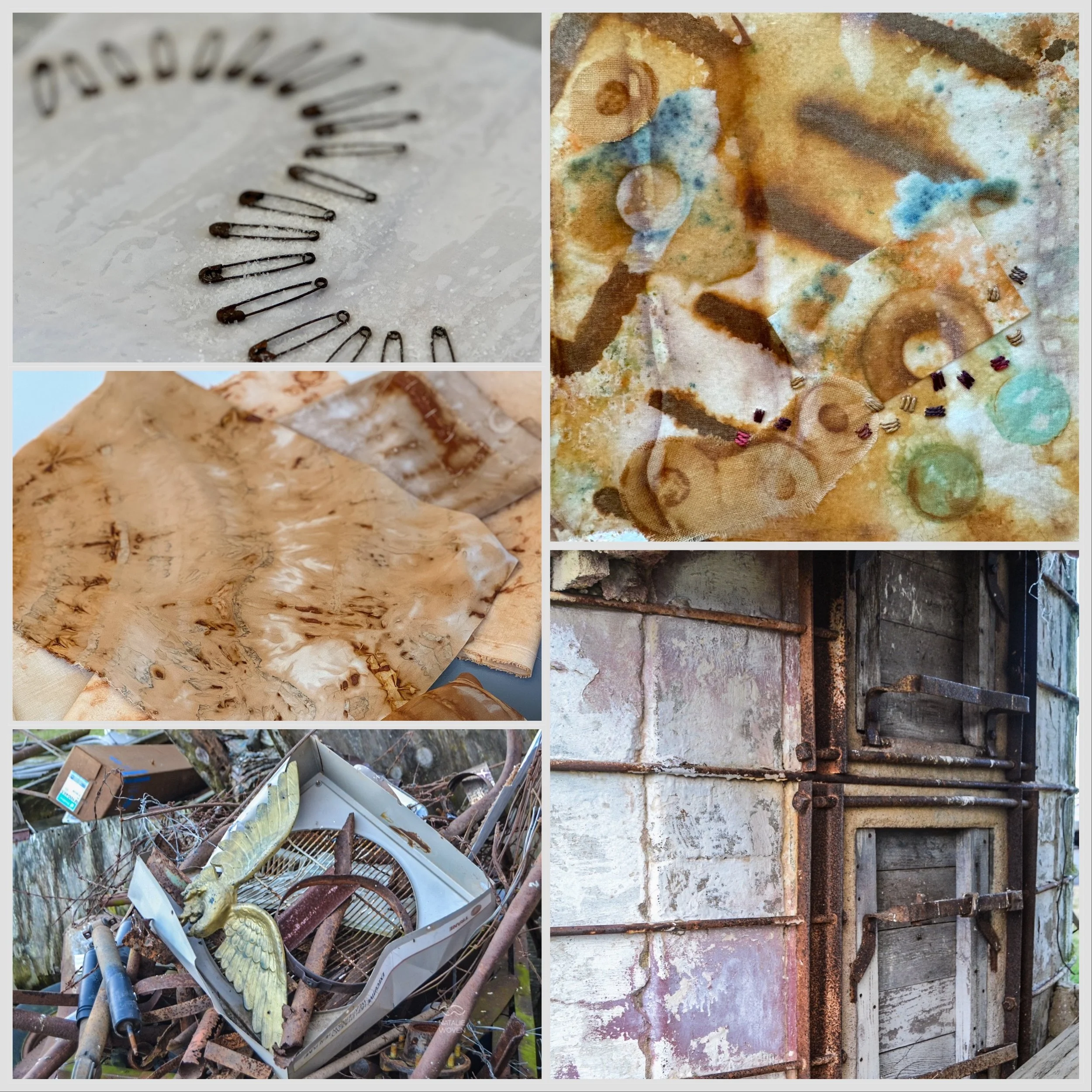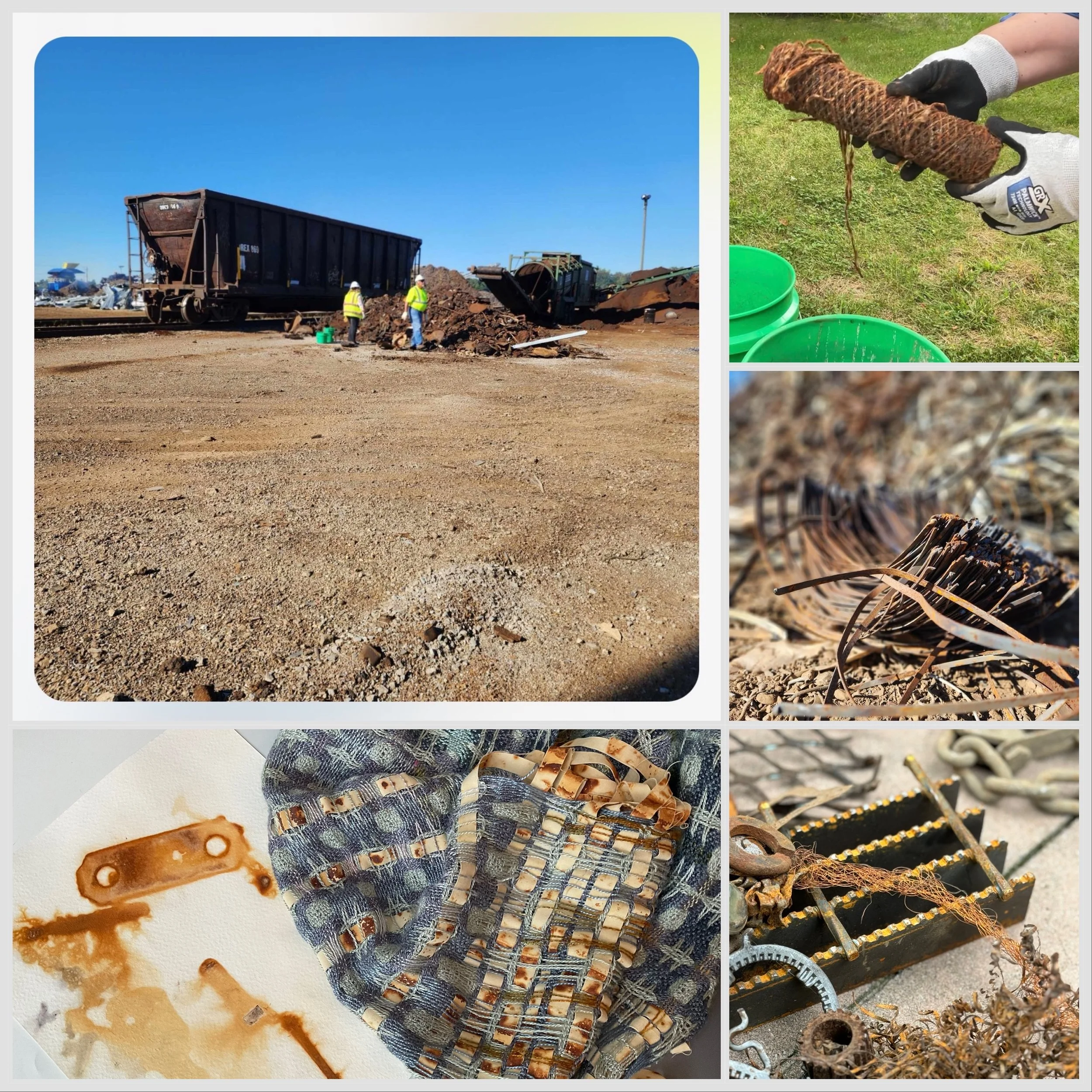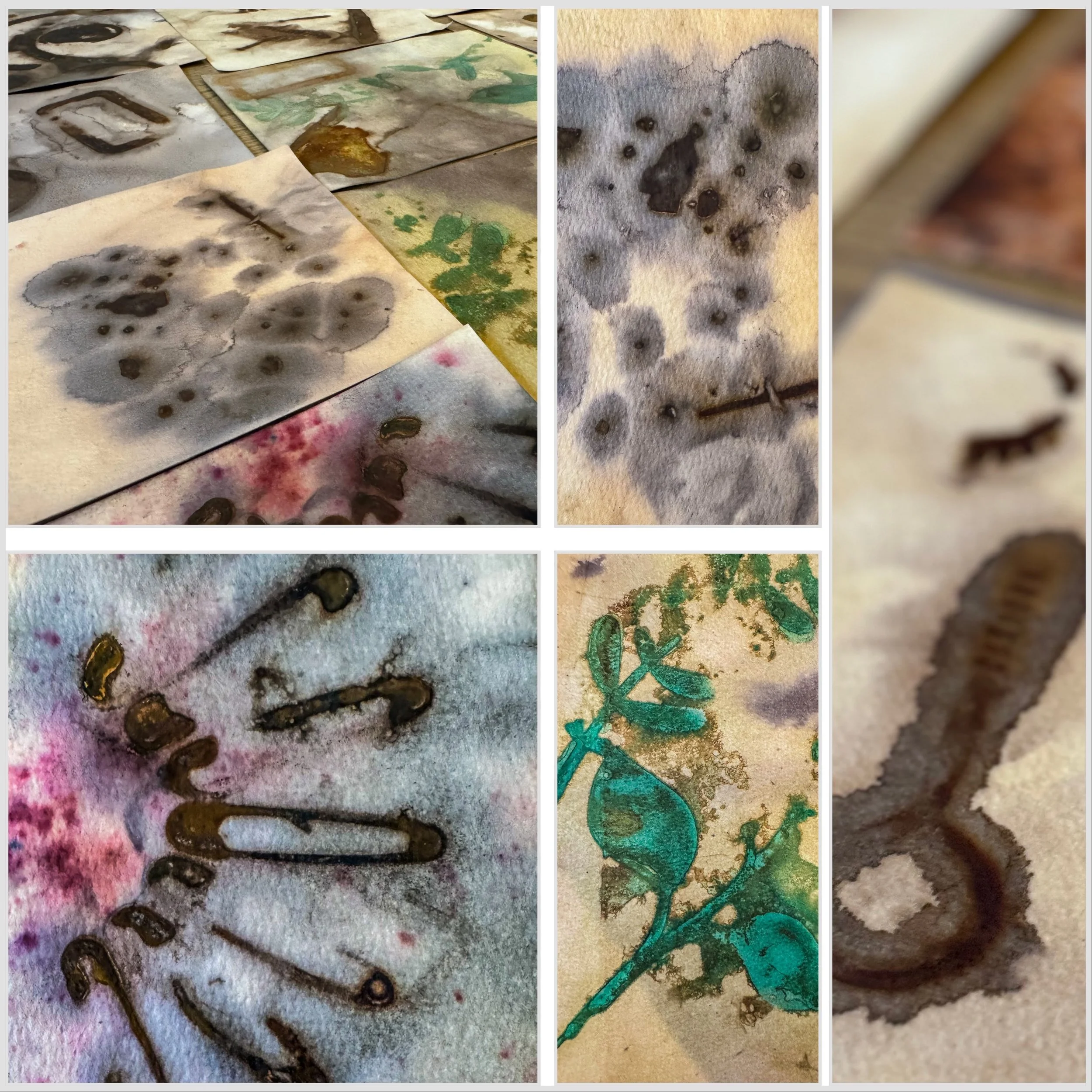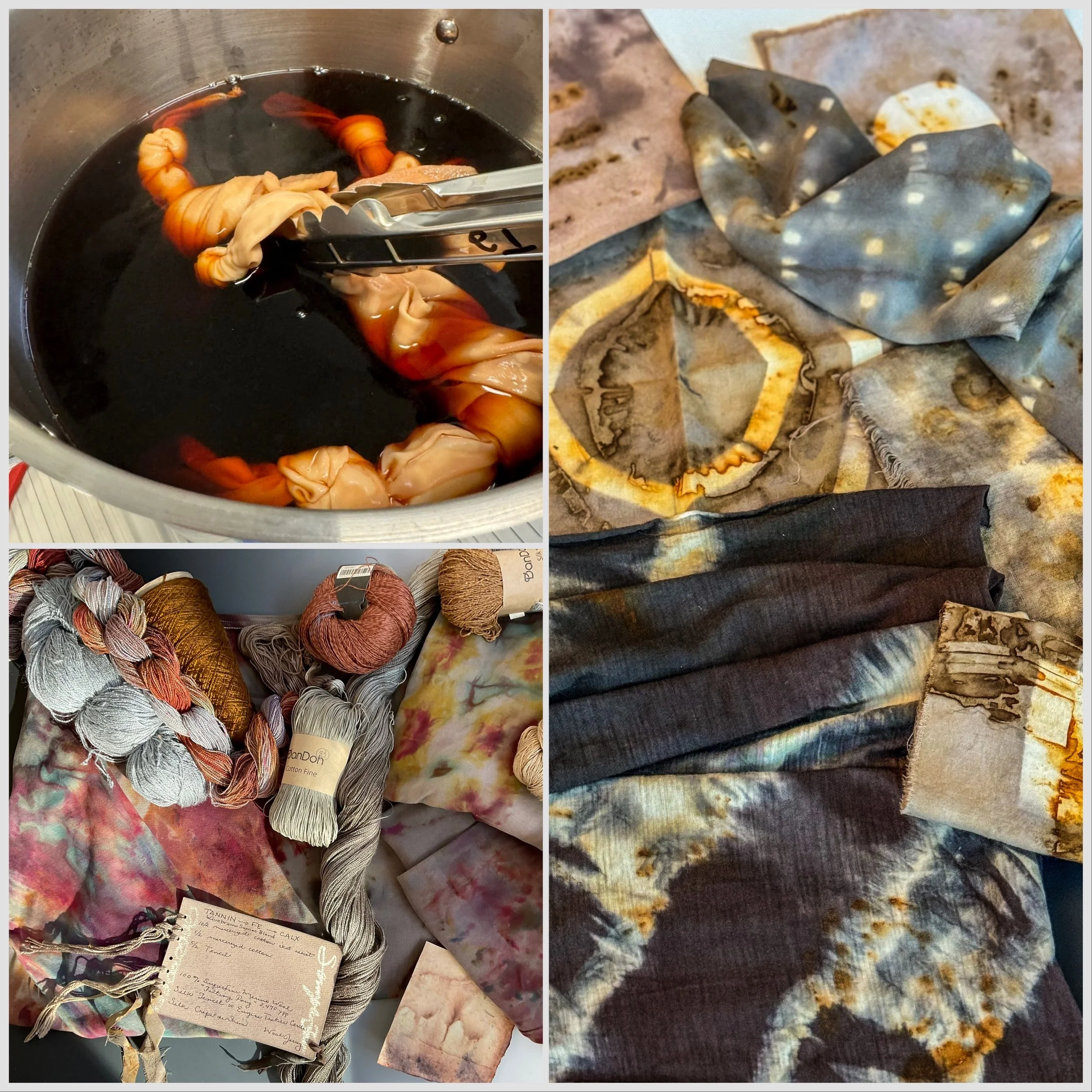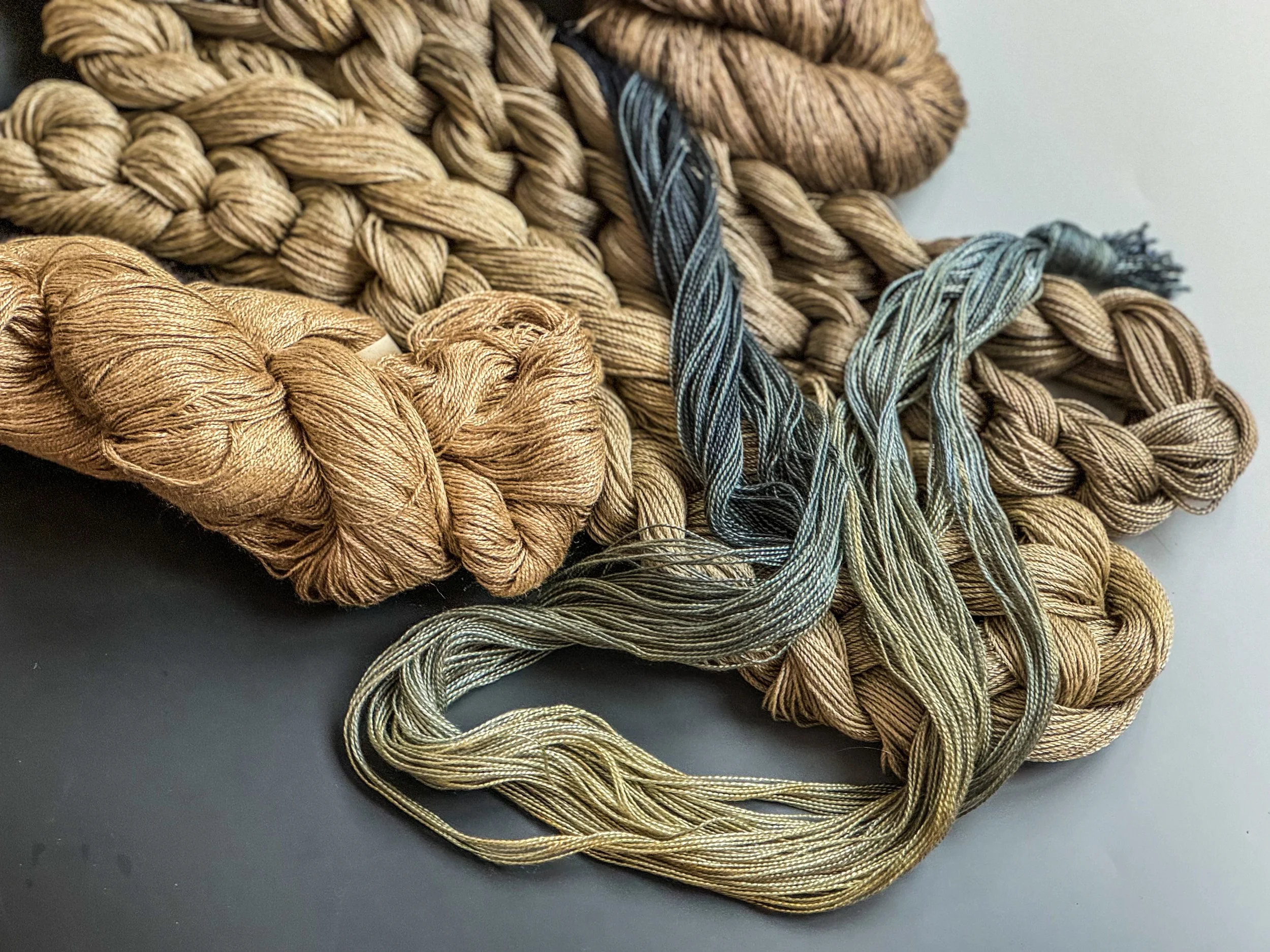Mixing Ice Dyeing and Tannins
My fascination with rust developed as a child growing up with frequent visits to my grandparents farm - a farm that has been in the family for over 100 years! I’ve been a long time admirer of Jule Mallett’s work with rust and have taken workshops with Deb Cooper -Textile Artist.org and Natalie Grambow with MAIWA. As a result I created my own mixed media collage using a variety of fibers: rust and copper printed on watercolor paper, linen, handmade paper, and an overlay of rust silk organza and some stitching. Some fiber reactive dyes were also used as I like to add my own creativity not explored in a workshop. I like to test on paper and fabric prior to dyeing on yarn. If I don’t pre-rust a fabric or yarn, I have found that I can use a tannin followed by a ferrous sulphate bath to produce some natural colors or brown or grays.
A visit to a local scrapyard now a recycling plant in Waterloo, Indiana with local artist, Sherry Schroeder and her husband Dave provided a lot of my initial rusting pieces and I have now become a collector of rusty pieces. Official rust gear was needed as well! And I didn’t quite expect to find yarn, but I picked up some rusted industrial fiber. My life-long friend, Mary Hardy added to my rusted object collection and visits to Virginia ended up in rust printing exploration. Here are some of the rust pieces along with my initial rusting on paper. Rusting is easy using a spray bottle with 2 parts vinegar to 1 part water and Salt applied in the wetted out stage.
Mixing fiber reactive dyes with rust, copper, and tannins was something I was eager to do to watch the interaction of color so the journey began. Watercolor paper is the easiest to test as it just needs to be pre-soaked in a water bath. This type of paper is also easily rinsed in a two step process using soapy Blue Dawn detergent and then a rinse in a separate bath. My handmade paper was wetted out with a spray bottle of vinegar and water as it comes apart too easily if I were to pre-soak. The addition of tannin is a separate bath after the paper has dried. Why tannin? Tannin causes the colors of the rust to shift into a different color palette. Your resulting colors will be shifted toward a brown or gray color depending on the tannin used. I’ve experimented with quebracho/sumac Tannin blend as well as Black Tea in these photos.
Dyeing fabric and yarn samples happens simultaneously when I prepare the baths. The first fabrics (no rust) I use and put into the dye bath have been scoured with synthrapol or Orvus with various resists so I can have some natural colors of browns, taupes, and grays. Next come the pieces that have been rusted with and without resists (right photo). Shibori resist techniques have been reviewed in earlier blogs and shared to the Fiber Art Blogs Facebook Group. And last come the fabric and previously ice dyed shirt samples (left bottom). I love how the shirts show the previous color and the idea of blending these techniques takes shape. Some cross contamination is conceivable when combining techniques. I avoid cross contamination as much as possible by using tools that only go in that dye pot even after washing.
Collecting possible yarns to use during the dyeing process as well as commercial yarns to use is also fun! A solid commercial yarn can really harmonize your weaving project. I’ve found a Tencel/silk blend from Eugene Textile Center (on sample card) that gives me a taupe color when using a quebracho sumac tannin blend (stainless steel pot) followed by ferrous sulphate and calcium hydroxide (CALX). Eugene Textile Center also had a wonderful dyed skein (center). Some other yarns I collected include Salt Spring Sky Tussah Silk by Jane Stafford Textiles, DanDoh Cotton Fine and DanDoh Slik + nougat from Websters in Oregon.
The hunt for fiber to natural dye as well as yarns to add color to the palette continued on a Textile Tour in Germany. The landscape scenes of Germany and weather in December provided a range of grays along with a range of colors observed in the houses and castles. Yarn Store visits included Tolle Wolle in Nuremberg, Schoppel, Wollmeise in Augsburg, and Die Mercerie in Munich. Lace weight knitting yarns are wonderful to use as weft.
Upon return I did some tannin dyeing with pomegranate - 20% Weight of Fiber (WOF). I followed most of the yarns with a quick bath of ferrous sulphate - 1.5% WOF. It’s important to note that iron has impact and will shift the colors of the fiber. Iron and heat can effect the texture making it feel rough. Cellulose fibers work really well with this dyeing process. When using a protein fiber, keeping the ferrous sulphate bath to low temperatures such as 38 degrees Celsius will aide in preserving your yarn. Also, it really only requires a small amount of iron to produce a shift in colors.
The resulting fibers are delightful. The warps in the center and a previously dyed warp are some of the results of both baths. The two skeins on either end are Muga Silk (gold) and natural tussah silk from Sanjo Silk.

